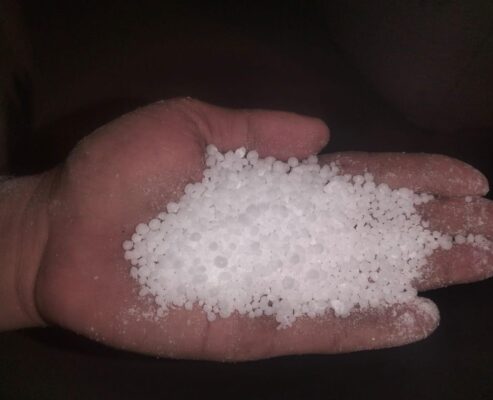Granular UREA
Granular urea is a common and widely used nitrogen fertilizer.
It’s a solid form of urea, a nitrogen-rich organic compound.
Granular urea is popular due to its high nitrogen content, ease of handling, and relatively low cost.
Characteristics:
High Nitrogen Content:
Granular urea typically contains around 46% nitrogen by weight, making it a highly concentrated source of nitrogen for plants.
Granular Form: The granular form allows for easy application using various spreading equipment.
Solubility: Urea is highly soluble in water, allowing it to be readily absorbed by plants.
Neutral pH: Granular urea has a neutral pH, making it suitable for most soil types.
Uses in Agriculture:
Topdressing: Applied directly to the soil surface to provide a quick boost of nitrogen to crops.
Broadcast Application: Spread evenly over fields to fertilize larger areas.
Incorporation: Mixed into the soil to provide a more sustained release of nitrogen.
Urea Benefits:
Effective Nitrogen Source: Provides essential nitrogen for plant growth and development.
Cost-Effective: Often a more economical option compared to other nitrogen fertilizers.
Easy to Handle: The granular form is convenient for storage, transportation, and application.
Versatile: Can be used on a variety of crops and soil types.
Considerations:
Volatility: Urea can be susceptible to volatilization, especially in warm, dry conditions.
This can lead to nitrogen loss if not applied properly.
Soil Type: The effectiveness of granular urea can vary depending on soil type and moisture conditions.
Environmental Impact: Overuse of nitrogen fertilizers can contribute to water pollution and greenhouse gas emissions.
Proper application and management are essential to minimize environmental impacts.
The Chemical Structure of Urea
| ELEMENT | unite | RESULT |
| Total Nitrogen N | W.T % | 46.0 % Min |
| Biuret content | W.T % | 1.0 % Max |
| Moisture, H2O5 ( Fischer method ) | W.T % | 0.3 % MAX |
| Formaldehyde | W.T % | 0.55 % Max |
| Free Ammonia | PPM | 100 PPM Max |
| PH (100g/I at 20 ° C ) | ˜ 9 | |
| Iron | Ppm | 1.0 ppm max |
| Ash | ppm | 20 ppm |
| Other heavy metals | PPM | NIL |
The Physical Analysis of Urea:
| ELEMENT | unite | RESULT |
| Color | Standard white or pure white | |
| Odour | odorless | |
| Particle size distribution | W.T % | 2-4.5 mm 95 % min |
| Crushing strength (3.15 mm granule) | KG | 3.0 kg min. |
| Bulk Density | Kg/m³ | 760-800 |
| Bolling | Decomposes before 132 °C | |
| Melting point | °c | Around 132°C |
| Radiation | Certified fully non- radioactivity | |
| Quality | Free flowing, treated with anti- caking And free from harmful substances |
|
Method of Analysis is according AOAC (Analysis official analysis certificate)
as per Thyssenkrupp (UHDE) Instructions
Please, submit your inquiries






